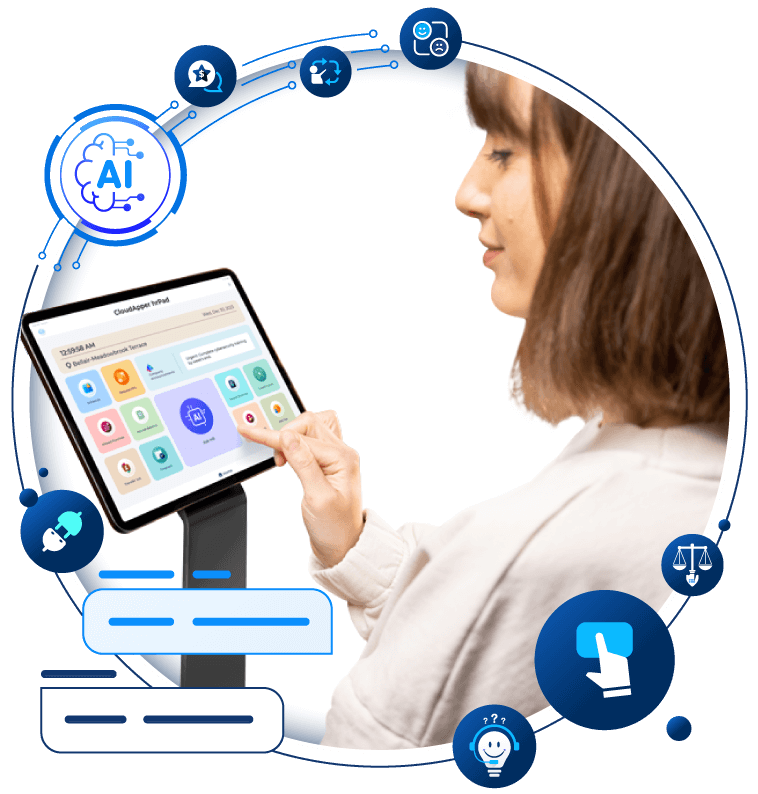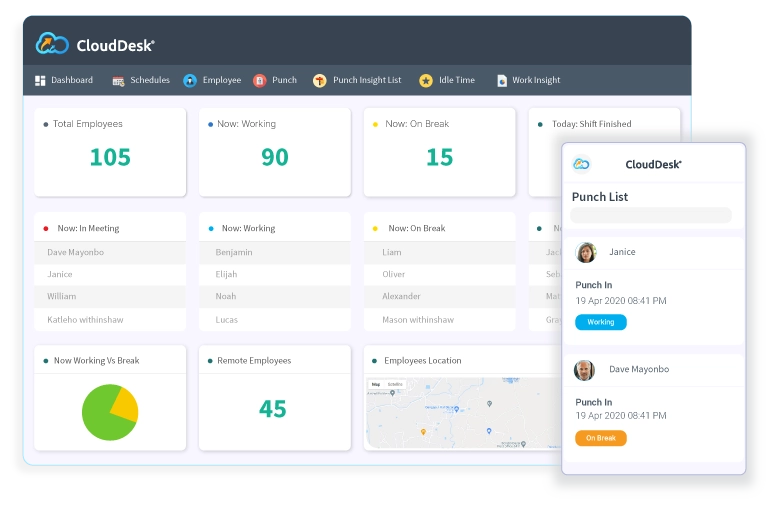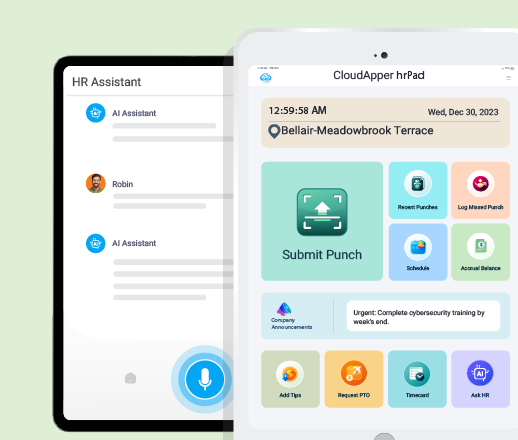Discover how CloudApper hrPad transforms networking into a strategic hiring tool, building efficient talent pipelines through employee referrals, reducing costs, and enhancing candidate quality.
Here’s What I’ve Learned: The Power of Networking in Building Talent Pipelines

TL;DR
- Networking is a powerful tool for building talent pipelines, transforming informal connections into strategic hiring advantages.
- CloudApper hrPad's referral feature leverages employee networks to enhance recruitment efficiency, reducing time-to-hire and improving cultural fit.
- Employee referrals are a top source of quality hires, cutting time-to-fill by 55% and reducing turnover rates.
- Nurturing relationships with referred candidates through continuous communication is crucial for long-term recruitment success.
- Feedback loops and AI-driven tools enhance the referral process, providing insights into candidate skills and fit.
- Innovative technologies like virtual reality can offer immersive candidate experiences, improving engagement and assessment.
- Strategic networking and technology use in recruitment build a resilient workforce prepared for future challenges.
Explore how CloudApper hrPad can transform your hiring strategy. Contact Us to learn more.
For more information on CloudApper hrPad visit our page here.
As a sales representative at CloudApper, I often find myself in conversations that challenge my understanding of workforce management and digital transformation. One such conversation happened during a demo request with a mid-sized tech company. The HR manager, let’s call her Sarah, was grappling with a common issue: how to effectively build a talent pipeline in a competitive market.
Sarah’s company was growing rapidly, and they needed to fill positions quickly with qualified candidates who fit their culture. Traditional recruitment methods were proving too slow and costly. As we discussed their challenges, I realized that the solution might lie in something as simple yet powerful as networking.
Networking is often seen as a tool for personal career advancement, but it can be a game-changer for organizational hiring strategies as well. This insight was a turning point for me, reshaping how I viewed the role of technology in enhancing human connections for strategic hiring.
During our conversation, I introduced Sarah to CloudApper hrPad‘s referral feature. This tool leverages employees’ networks to build talent pipelines, transforming informal connections into strategic hiring advantages. The idea is simple: employees refer candidates from their networks, which often results in faster hiring processes, better cultural fits, and reduced recruitment costs.
Reflecting on this, I realized that the power of networking in recruitment is not just about filling positions quickly. It’s about building a community of potential candidates who are already aligned with the company’s values and culture. This approach not only enhances the quality of hires but also strengthens the organization’s brand as an employer of choice.
One of the key benefits of using a referral system like hrPad’s is the reduction in time-to-hire. According to a study by the Society for Human Resource Management (SHRM), employee referrals are the top source of quality hires, cutting down the time-to-fill for positions by almost 55%. This efficiency is crucial in sectors where specific skills are in high demand but short supply.
Moreover, referrals often lead to candidates who are more likely to stay with the company longer, reducing turnover rates. This is because referred candidates usually have a better understanding of the company culture and expectations, thanks to their connection with current employees.
Another insight I gained from this experience is the importance of nurturing relationships with referred candidates. It’s not enough to simply add them to a database and wait for a position to open up. Continuous communication is key. Keeping candidates engaged with regular updates and personalized communication strategies can make them feel valued, even if they are not selected immediately. This long-term relationship-building is crucial for future recruitment needs.
Feedback loops also play a vital role in refining the referral process. Encouraging feedback from both employees and candidates can significantly improve the process by addressing gaps and making necessary adjustments. This not only enhances the candidate experience but can also lead to the development of new strategies for engagement and retention.
Technology can further enhance the referral process. AI-driven tools, like those integrated into CloudApper hrPad, provide insights into candidate skills and fit, enabling more informed decisions and streamlining the hiring process. Predictive analytics can forecast a candidate’s potential performance and cultural fit within the organization, reducing the risk of turnover and boosting productivity.
Additionally, innovative technologies like virtual reality can offer immersive candidate experiences, enhancing engagement and assessment of potential hires. For instance, virtual reality can simulate a day in the life at the company, allowing candidates to better understand the job role and work environment. This is especially beneficial in technical fields where practical skills are critical.
Reflecting on Sarah’s situation and the solutions we discussed, I realized that the strategic use of networking and technology in recruitment is not just about filling immediate needs. It’s about building a resilient and dynamic workforce that is prepared for future challenges. By leveraging tools like CloudApper hrPad, organizations can transform networking into a strategic hiring tool, ensuring they are not just reacting to market changes but are prepared for them.
In conclusion, the insights I gained from this experience have reshaped my understanding of workforce management. Networking, when combined with the right technology, can be a powerful tool for building talent pipelines. For HR leaders, IT admins, and ops managers, the key takeaway is to view networking not just as a personal career tool but as a strategic asset for organizational growth. By nurturing relationships and leveraging technology, organizations can build a workforce that is not only skilled and efficient but also aligned with their values and culture.
For those interested in exploring how CloudApper hrPad can assist in achieving these goals, feel free to Contact Us. The journey from networking to hiring is one of transformation, and with the right tools, it can lead to a future-ready workforce.
Turn Any Tablet Into an Employee Experience Kiosk
Time Capture|Self Service|AI Workflow Automation
Learn more | Download Brochure
How To Build an Effective Talent Pipeline Using Networking
- Leverage Employee Networks: Encourage employees to refer candidates from their personal networks. This can quickly bring culturally aligned candidates into the recruitment process.
- Utilize Referral Tools: Implement tools like CloudApper hrPad to streamline your referral process. These tools can significantly reduce time-to-hire and improve candidate quality. Explore the benefits of CloudApper hrPad for more information.
- Engage with AI and Technology: Use AI-driven methods to gain insights on candidate skills and potential cultural fit, aiding more informed hiring decisions. For more details, check AI in HR.
- Foster Continuous Communication: Maintain regular contact with referred candidates, keeping them engaged with updates and personalized communication, ensuring they feel valued.
- Encourage Feedback: Set up feedback loops with both employees and referred candidates to improve the referral and hiring process continuously.
- Implement Innovative Tools: Consider using technologies like virtual reality to provide immersive candidate experiences, helping assess fit more interactively. Learn more about innovative HR solutions.

Transform Your Employee Experience With
AI Tools for hrPad
Employee Self-Service tools to automate accessibility and time management.
Learn more | Download BrochureFAQs about Networking and Recruitment
- How can networking improve the recruitment process?
Networking can enhance recruitment by utilizing existing employee networks to identify potential candidates who are already aligned with the company's culture and values. This approach reduces time-to-hire and improves candidate quality. - What are the key benefits of using referral systems in recruitment?
Referral systems like CloudApper hrPad's referral feature can significantly lower hiring costs, speed up the hiring process, and ensure better cultural fit by leveraging employees' networks. For more insights, read about the CloudApper hrPad. - How does technology enhance the referral process?
Technology, including AI-driven tools, can provide insights into candidate skills and fit, aiding in data-driven hiring decisions. Additionally, tools like virtual reality can simulate workplace experiences for candidates. Discover more about it in our article on AI in HR. - How can HR departments address recruitment challenges effectively?
By leveraging AI and automation, HR teams can streamline recruitment processes, reduce biases, and enhance candidate engagement. Learn how AI helps with Addressing HR Challenges. - What steps should be taken after referring a candidate?
It's important to maintain continuous communication, offer personalized support, and encourage feedback to refine the referral process. This ensures candidates feel valued and engaged, creating a robust talent pipeline for future needs.
Similar Posts

Fostering a Feedback-Driven Culture with CloudApper hrPad: A Customer’s Journey

Empowering Employee Autonomy with CloudApper hrPad: A Path to Greater…






